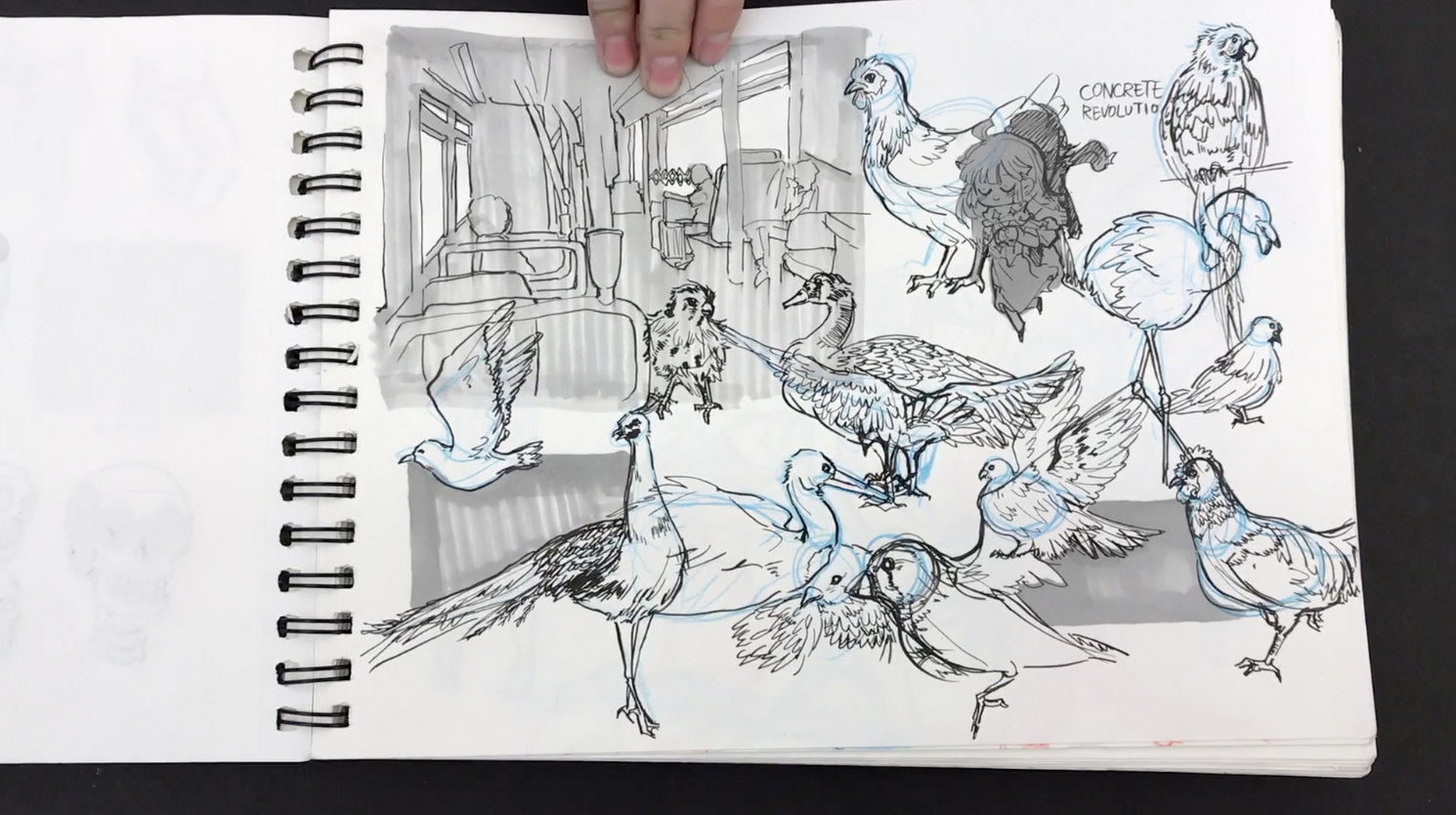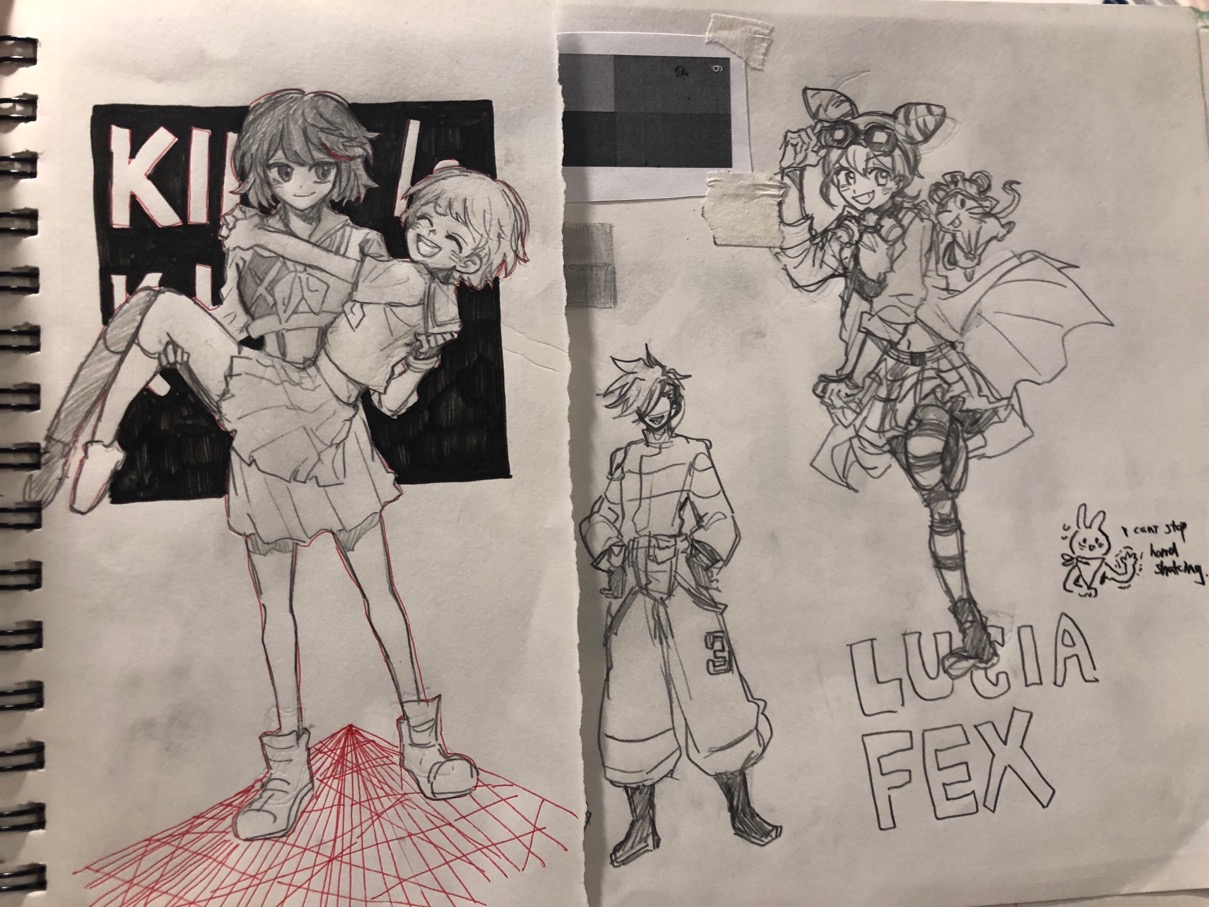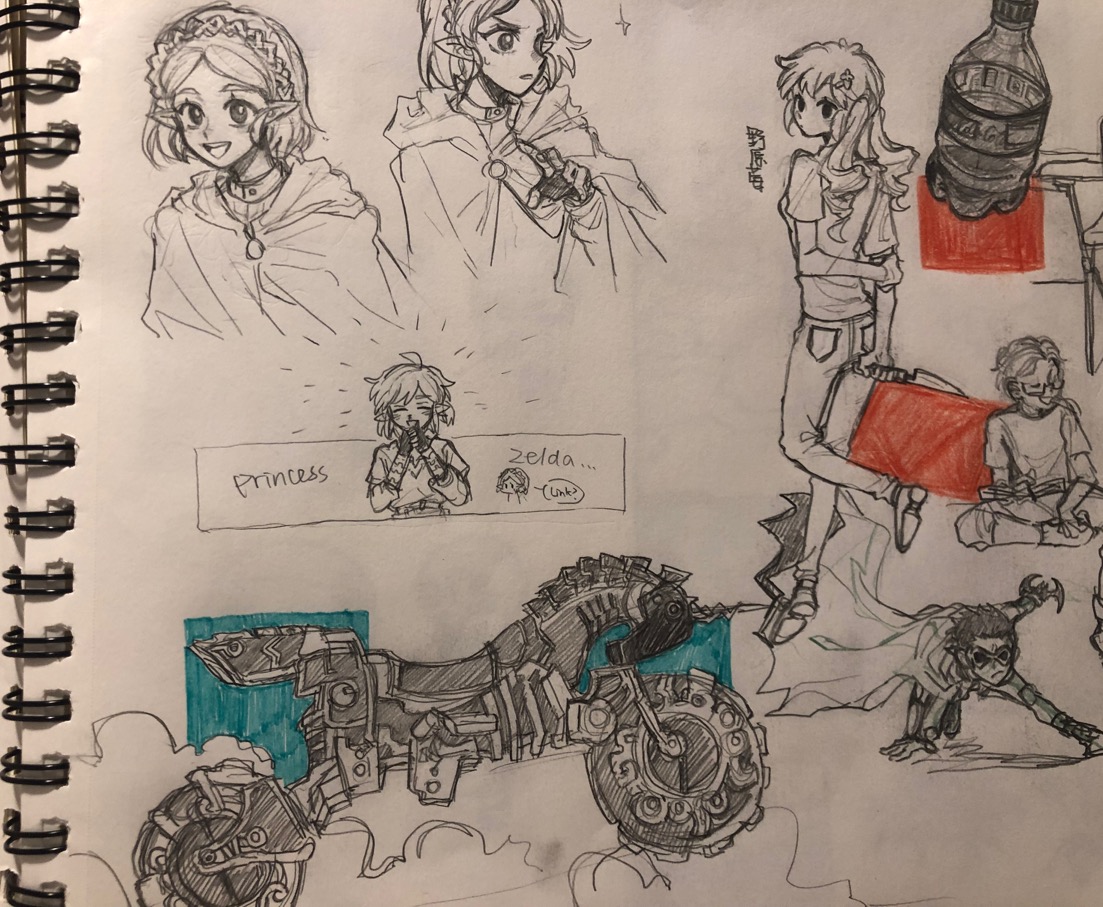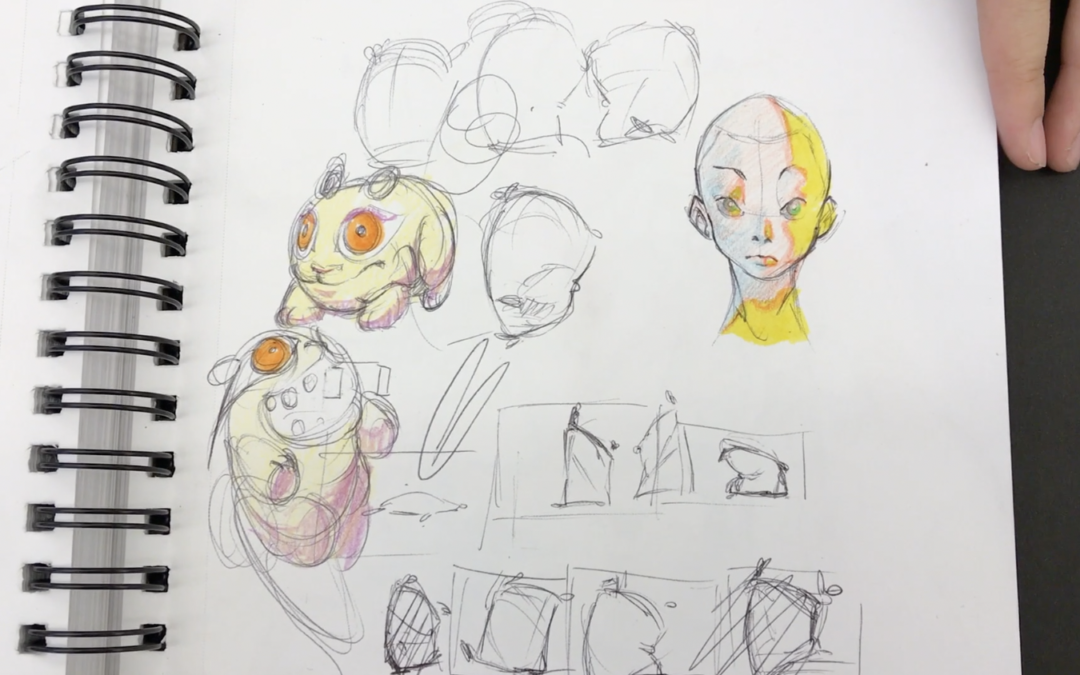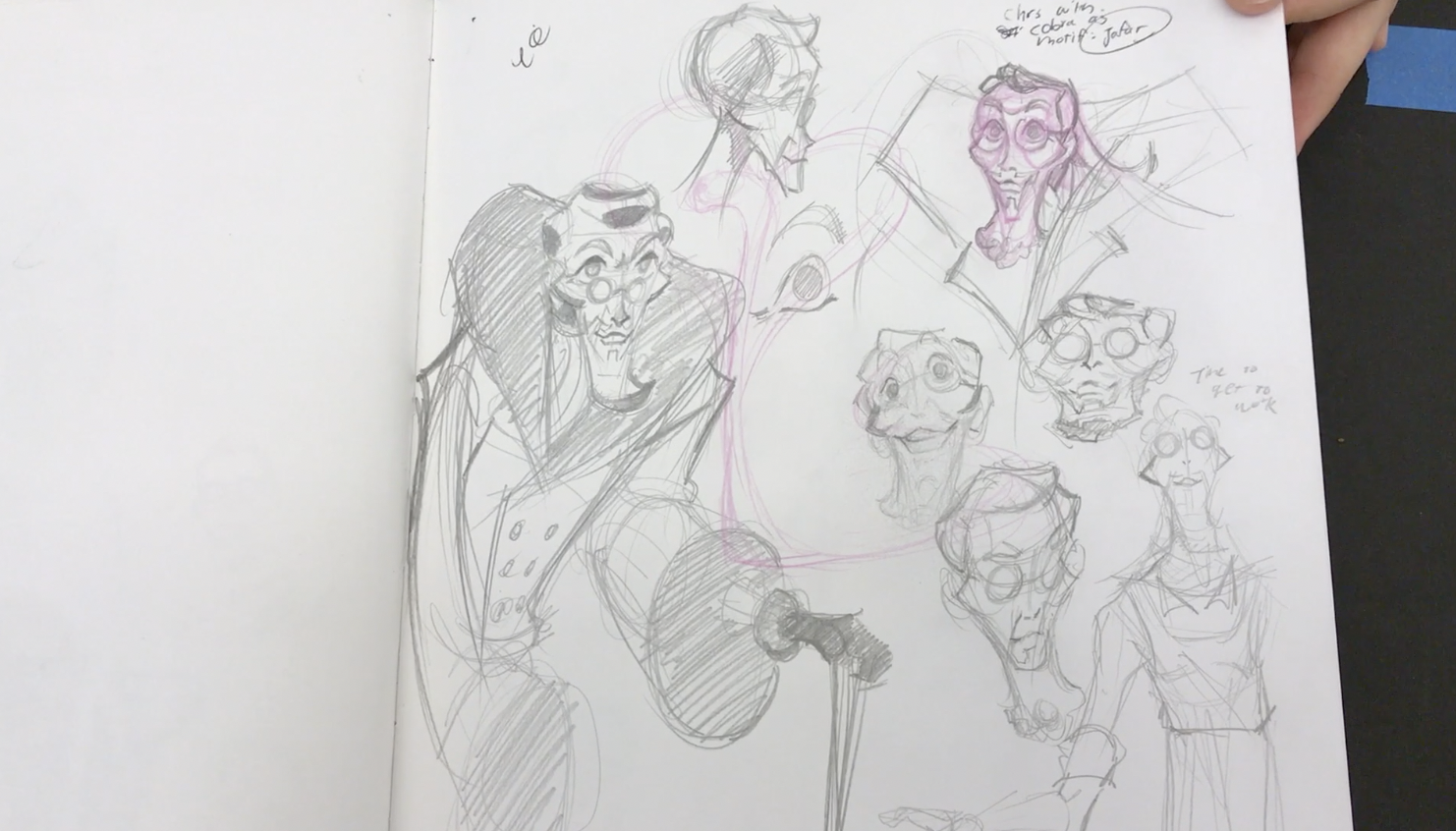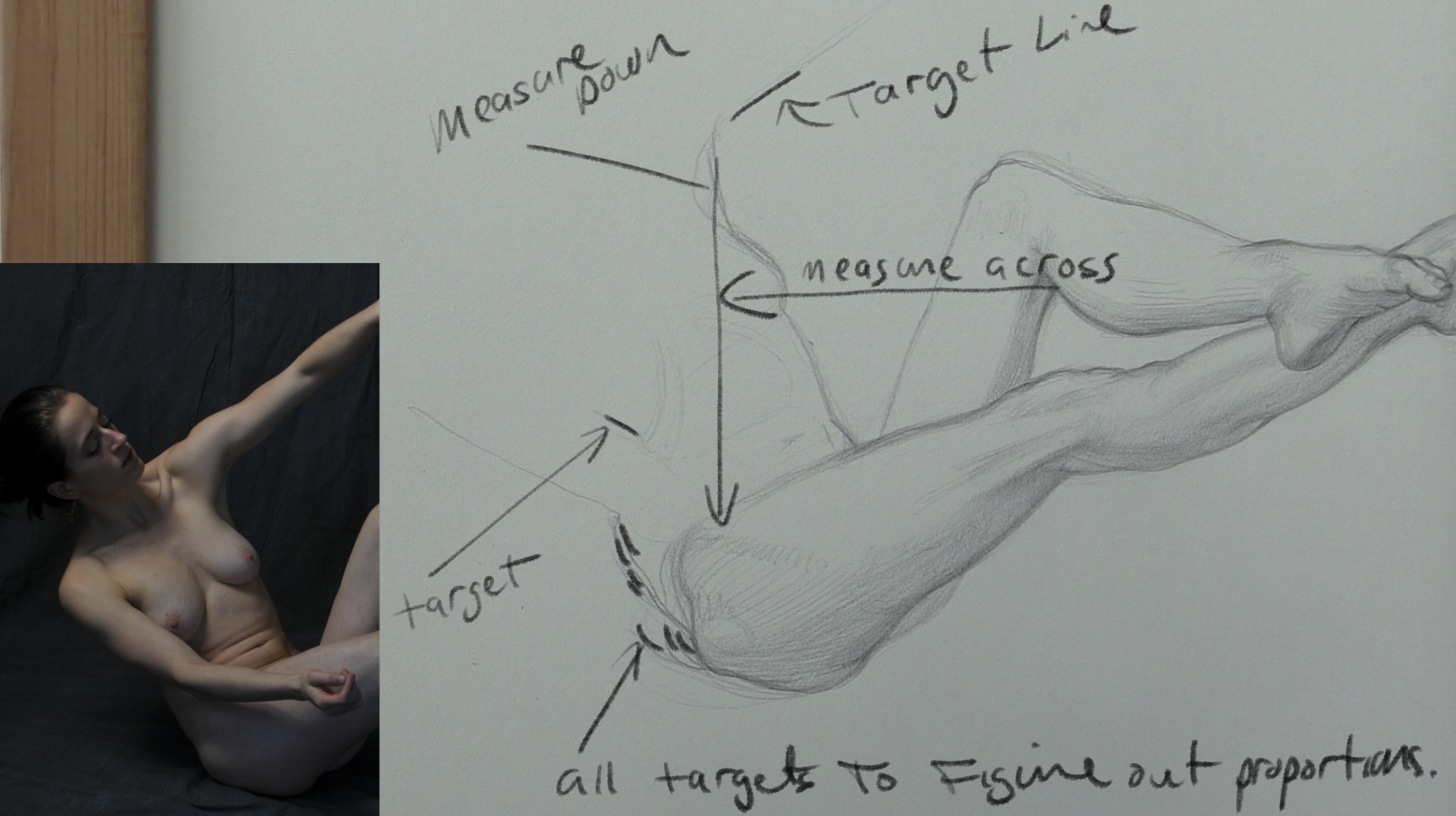
Merlin’s Sketchbook – Details
Merlin is currently enrolled in my foundation drawing class at the School Of Visual Arts.
What I love about Merlin’s sketchbook is the variety. She challenges herself to draw many diverse things. From birds, to interiors, to the figure to fan art, variety is her thing.
When you are on a journey to learn how to draw, a great thing to do, especially at the beginning of your journey is to draw diverse things. This will open your up to see what you like to draw.
Merlin has such strong line, she is very confident with her artwork, she powers in the lines beautifully.
The other great aspect of looking into Merlin’s sketchbook, you can tell right away that she is having fun with what she is drawing. She is diving right into drawing difficult poses and things like complicated birds. Do your best to follow Merlin’s lead, having fun while challenging yourself to improve.
Check out Merlin’s Instagram. Thanks again Merlin for sharing your art. I look forward to your next sketchbook.





